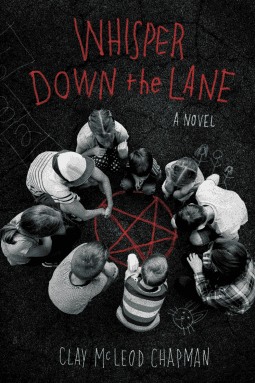
Synopsis:
A pulse-pounding, true-crime-based horror novel inspired by the McMartin preschool trial and Satanic Panic of the ’80s.
Richard doesn’t have a past. For him, there is only the present: a new marriage, a first chance at fatherhood, and a quiet life as an art teacher in Virginia. Then the body of a ritualistically murdered rabbit appears on his school’s playground, along with a birthday card for him. But Richard hasn’t celebrated his birthday since he was known as Sean . . .
In the 1980s, Sean was five years old when his mother unwittingly led him to tell a lie about his teacher. When school administrators, cops, and therapists questioned him, he told another. And another. And another. Each was more outlandish than the last—and fueled a moral panic that engulfed the nation and destroyed the lives of everyone around him.
Now, thirty years later, someone is here to tell Richard that they know what Sean did. But who would even know that these two are one and the same? Whisper Down the Lane is a tense and compulsively readable exploration of a world primed by paranoia to believe the unbelievable.
Review:
Whisper Down The Lane is eye-wateringly tragic, carefully constructed, and a novel in which the terror is tangible, and grounded in reality. If you want 80s nostalgia, gnarly body horror and mild heart palpitations, all can be found within Chapman’s writing.
In 1983, we meet Sean, a reserved young boy, who really just wants his mum to be happy. If that means telling adults what they want to hear, then so be it. His relocation to Greenfield, Virginia is supposed to be a fresh start for him. Initially, Sean seems to be coping with this change relatively well, until a curveball hits so hard, it knocks the reader off of their feet, and ruins any semblance of a quiet transition into Greenfield. Sean’s mother, an emotionally distant parental figure, has inadvertently shaped this need for approval, and so when she asks him about the bruises he’s sustained, he’s willing to conform to whatever narrative she creates.
30 years later, we meet Richard, an art teacher, who’s recently moved in with his wife Tamara, and her 5 year old son Elijah. Despite a rough childhood, life is good- but this is a horror novel. Of course, the moment things seem peachy, a dead rabbit comes along. Following the brutal (seemingly ritualistic) murder of beloved school pet and mascot Mr Howdy, Richard doesn’t feel safe in the classroom- and when the threat follows him home, the novel truly takes off.
The book is inspired by the McMartin preschool trials, and the notorious “Satanic panic,” of the 80s. This was an era dear readers, when our beloved genre was seen as devil worship, the music of Black Sabbath and others was feared, and extreme satanists were believed to be everywhere… school teachers, neighbours… anyone. The McMartin pre-school trials commenced in 1984, and spanned several years. There were multiple, sensational accusations made against the McMartin preschool staff, including ritualistic abuse, satanic rituals and perverse acts against the children. The nature of these false allegations, which were sensationalised by the media and the social anxiety at the time, heavily contributed to the broader Satanic Panic.
This was clearly thoroughly researched by Chapman. Whilst being respectful, “Whisper Down The Lane,” pretty accurately explores this slightly bonkers time in American history. Informative fiction is not generally something that goes hand in hand with horror, but Chapman made it happen.
There’s a lot to unpack within Whisper Down the Lane, which is why I highly recommend you read it for yourself. Manipulation, lies, memory and guilt are all explored within the novel, and there’s some really interesting commentary regarding storytelling and recounting history. Ultimately, the novel is about a white lie that snowballs -neigh, avalanches- into something much, much bigger.
Having tackled all of those heavy themes, it comes no surprise the novel offers up a very interesting character study. Sean’s chapters (damned if you do) are written in the third person, whilst Richard’s (damned if you don’t… clever right?) are written in the first. I’m terrified of spoiling anything for you, but people who’ve read the book will understand just how clever and symbolic this decision was. Whilst the characters are interesting, it’s difficult to determine your feelings about them- because they’re in the wrong. This makes the entire novel sad and simply frustrating- demonstrating just how wonderful Clay’s writing is. He ensures you’re one step ahead of Richard at all times (the dramatic irony is intense) and this had me audibly groaning at the end of each chapter, where things (somehow) get worse, EVERY. DAMN. TIME.
Oh and the ending. I’ve heard other reviewers refer to it as a plot twist, and I think I disagree. It’s less of an unveiling, and more of an unwanted confirmation of what the reader KNOWS, but just doesn’t want to believe. Well, tough. It is brutal.
All in all, “Whisper Down the Lane” is a tragic tale of hysteria, guilt and denial, that takes no prisoners. “Good,” doesn’t come out on top, and “evil,” doesn’t prevail either… there are no winners. It’s dark and gritty, yet so readable, you may want to sell your soul in return for more.









Leave a Reply